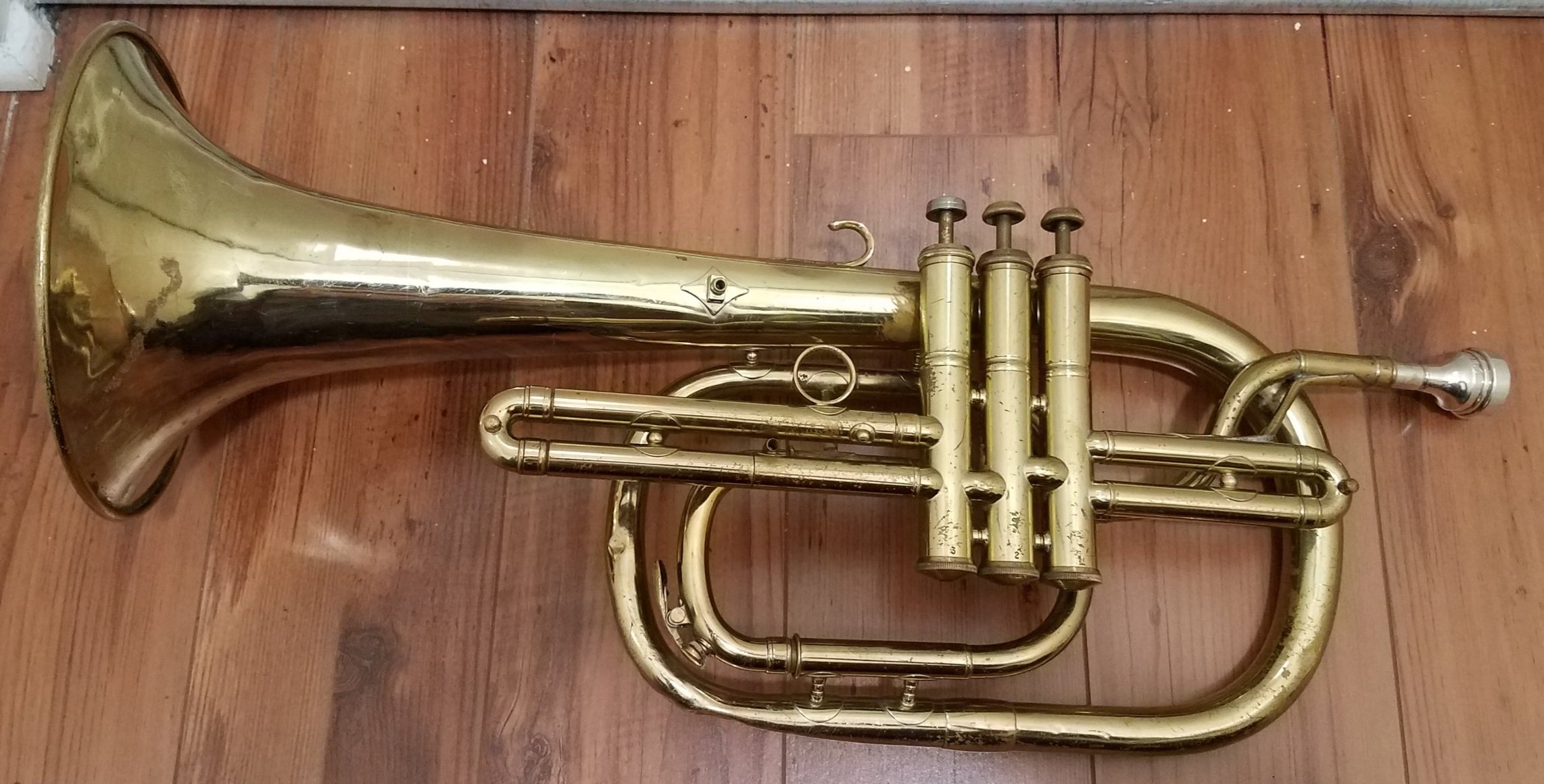Alto Flugelhorn
There are alto trumpets, alto cornets, alto bugles, and of course alto horns, along with many other alto-voice brass instruments that have more interesting names. But what about an alto flugelhorn? This would be an instrument a 4th or 5th below the standard flugelhorn, still with a flugelhorn bore profile. This instrument does exist, but it’s not very common. It’s even rarer than alto trumpet or alto cornet, but it seems to bring more to the table than either of those do.
Here’s an alto flugelhorn - an “Elkhart”-stenciled Couesnon alto flugelhorn in F or E-flat:
This instrument has a gorgeous low flugelhorn sound that matches my Couesnon flugelhorn very well. In my opinion the sound is so purely flugelhorn that if someone heard an audio sample without knowing what instrument was playing, I’m guessing most brass players would immediately guess a 4-valve flugelhorn or maybe some other kind of flugelhorn. It does have a subtle hint of euphonium to the sound as well.
This alto flugelhorn plays just as well as my fabulous pre-WWI Couesnon flugelhorn, and is one of the better-designed/easier-to-play bell-front alto brass instruments that I’ve owned and played. It’s wonderful, and the sound is creamy smooth.
Couesnon alto flugelhorn (left), Couesnon flugelhorn (right)
These Couesnon alto flugels used to grow on trees on eBay, but in the past decade or so they sort of disappeared. I was surprised when this one showed up, and this time I didn’t let it pass me by. I enjoyed owning it and used it on my 2023 Christmas multitrack, but I no longer own it. First, I realized that my Kanstul 275 marching alto was actually better at being an alto flugelhorn than this actual alto flugelhorn…and then I realized that I didn’t even need that as my Holton M602 mellophonium is equally as good at being an alto flugelhorn as the Kanstul 275, while also having much more character. So off both went.
I have owned an alto trumpet, alto cornet, alto flugelhorn, and 2 alto bugles, but sadly none at the same time (so no back-to-back demos). But this alto flugelhorn sounded VERY different than the alto cornet did. It had that velvety flugelhorn darkness that the alto cornet just didn’t have, much more like the Dynasty III alto bugle in G (which is essentially an extra-large G flugelhorn).
Here’s a quick back-to-back comparison I did of my Couesnon flugelhorn and the Elkhart (Couesnon) alto flugelhorn. Hopefully, despite the phone microphone, you can hear the subtleties in each instrument’s sound.
Lastly, here are some photos of other types of alto flugelhorn out there. Most are in E-flat, which makes sense as the even rarer soprano flugelhorn is also in E-flat.










